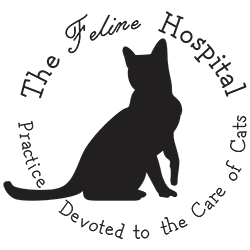Hypertension (High Blood Pressure) - A Doctor's Point of View

Hypertension is very common in cats. It is a disease that is extremely detrimental to many organs, just like with people. In human medicine, it is sometimes called the silent killer. This is meant to describe how little to no obvious signs are associated with the onset of hypertension. Many times the disease is silent in cats as well. This fact does not belie the harm done to the affected body. Uniquely in cats, excessive vocalization is often observed with high blood pressure. So sometimes, it is the very loud, at 3 in the morning killer! Cats will often go through this excessive night crying when their pressure is spiking up. I know because my personal cat Delilah is affected. If I miss her medicine, I often get a late night reminder.
Initially, she had no night crying or obvious symptoms, and her lab work looked really good for her age (20yo in April!). Like many owners, I was reluctant to put her on a lifelong medicine. But I followed her borderline high reading until it passed above the borderline range. Most of us are concerned about any systolic reading at or over 160. We check blood pressure in cats just like it is checked in humans. We use a spigmometer and human pediatric sized cuffs, and most commonly a Doppler probe to measure the systemic blood pressure. Most of us cat doctors only have concern about the systolic reading. In humans, a fraction is the standard way of reporting systemic blood pressure. The systolic reading is on top and the diastolic reading is on the bottom. We usually only concern ourselves with the systolic, or high reading in kitties. Most serious problems result from a peak pressure insult to susceptible organs. The classic consequence is retinal detachment resulting in a sudden blindness in cats. In some cases, this will be the sign that inspires the cat owner to present the cat to the veterinarian. The ability to reverse the change in the retina is dependent on the degree of detachment and the length of time detached (the longer, the more poor the prognosis).
Whether it is a sudden change or just a routine senior screening, all cats at or over the age of 10 should have their blood pressure checked at least annually. Once they are 13 and above, biannual is preferred since one of their years is equivalent to 4-7 of our years. No older human gets their pressure checked every 4-7 years! If a cat is recognized as being hypertensive, medicine that almost always controls the problem is available. We will then check the pressure after starting medicine and make sure we have achieved the target range. Once the pressure is controlled on medicine, the medicine is continued (most often for life). We also need to include a blood and urine check to determine if the hypertension is primary or secondary.
In most cases, eventually, the hypertension is secondary to another primary disease process. The two most common primary diseases that every hypertensive kitty should be screened for are Hyperthyroidism and Chronic Renal (kidney) Disease. If neither of these diagnoses are found, we may initially consider the hypertension to be primary. Many of these cats will then have CRD or Hyperthyroidism diagnosed in future years, so stay tuned. The other disease process that can cause secondary hypertension is primary Heart Disease. Heart disease is common in cats, even in middle age. All primary hypertension cats should have their heart listened to well and possibly be evaluated with an echocardiogram to rule out underlying heart disease. Regardless of cause, systemic blood pressure that is consistently above the normal range must be treated and the common primary causes followed closely. In almost all cases, the hypertension is well controlled on medicine. The kitty with controlled, normal blood pressure will live a more complete and comfortable life. And the owner will not be woken up with the night crying.
